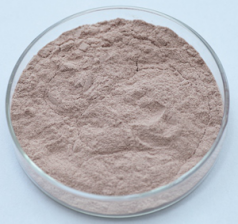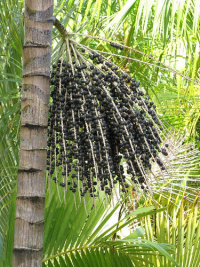Best Price for Acai berry extract in Jersey
Best Price for Acai berry extract in Jersey Detail:
[Latin Name] Euterpe Oleracea
[Plant Source] Acai Berry from Brazil
[Specifications] 4:1, 5:1, 10:1
[Appearance] Violet Fine Powder
[Plant Part Used]:Fruit
[Particle size] 80 Mesh
[Loss on drying] ≤5.0%
[Heavy Metal] ≤10PPM
[Pesticide residue] EC396-2005, USP 34, EP 8.0, FDA
[Storage] Store in cool & dry area, keep away from the direct light and heat.
[Shelf life] 24 Months
[Package] Packed in paper-drums and two plastic-bags inside.
[Gerneral feature]
- 100% extract from Acai berry fruit;
- Pesticide residue: EC396-2005, USP 34, EP 8.0, FDA;
- Directly import fresh frozen acai berry fruits from Brazil;
- The standard of the heavy mental is strictly according to the
foreign pharmacopoeia USP, EU.
- High standard of the quality of imported raw materials.
- Good water solubility, reasonable price.
[What is Acai berry]
The south American Acai palm(Euterpe oleracea)-known as the tree of life in Brazil-provides a small berry which is growing in fame, particularly following recent studies by well-known herbalists and naturopaths that have categorised it as a “superfood”. Acai berries are extremely rich in antioxidants, vitamins and minerals. The acai berry is also famous for its capacity to support dieting, protect the skin, reduce the risk of cardiovascular disease and prevent the development of certain types of cancer.
[Function]
While there are many different berry and fruit juices on the market, Acai contains the most complete array of vitamins, minerals, and essential fatty acids. Acai contains Vitamin B1 (Thiamin), Vitamin B2 (Riboflavin),
Vitamin B3 (Niacin), Vitamin C, Vitamin E (tocopherol), iron, potassium, phosphorus and calcium. It also contains the essential fatty acids Omega 6 and Omega 9, all the essential amino acids, and more protein than an average egg.
1)Greater Energy and Stamina
2)Improved Digestion
3)Better Quality Sleep
4)High Protein Value
5)High Level of Fiber
6)Rich Omega Content for Your Heart
7)Boosts Your Immune System
8)Essential Amino Acid Complex
9)Helps Normalize Cholesterol Levels
10)Acai Berries Have 33 Times the Antioxidant Power of Red Grapes and Red Wine
Product detail pictures:

Related Product Guide:
Our personnel are always inside the spirit of "continuous improvement and excellence", and together with the outstanding excellent goods, favorable price and good after-sales services, we try to gain every customer's trust for Best Price for Acai berry extract in Jersey , The product will supply to all over the world, such as: Switzerland, Sacramento, Myanmar, Now we are sincerely consider to grant brand agent in different areas and our agents' maximum margin of profit is the most important thing we care about. Welcome all of the friends and customers to join us. We are ready to share win-win corporation.
Swiss Chard
Two main varieties of Swiss chard are found on store shelves: one with multicolored stems and veins, often called rainbow chard, and another with white stems and veins. Both are great sources of lutein and zeaxanthin, an antioxidant duo that’s good for your eyes. At only 7 calories a cup, the green giant is waistline-friendly, too. Cooking tip: To preserve its nutritional might, lightly steam chard and toss with vinaigrette. You can also use the leaves instead of tortillas when making soft tacos.
Collard Greens
This Southern favorite contains a wealth of nutritional goodness, including notable amounts of vitamins K and C, folate, and beta-carotene. To make it easier to meet all your daily nutrient needs, aim to eat about 2 cups of dark, leafy greens like collards every day. Cooking tip: Quickly blanch the leaves in boiling water, then chop them and add them to whole-grain or lentil salads.
Asparagus
With an earthy-sweet flavor, asparagus is a good way to load up on folate. Research suggests that this B vitamin is an ally in the battle against high blood pressure. Cooking tip: Shave raw asparagus with a vegetable peeler. You’ll get ribbons that are wonderful in salads.
Spinach
This green has healthy amounts of vitamins C, A, and K as well as manganese. Working 1.5 cups of green, leafy vegetables into your day may lower your odds of getting type 2 diabetes. Cooking tip: Sneak spinach into your daily routine by adding it to scrambled eggs and casseroles or blending it into smoothies.
Baby Kale
Packed with nutrients like beta-carotene, vitamin C, and bone-building vitamin K, kale has been billed as an ultimate super food. Not everyone likes its strong flavor. Enter up-and-coming baby kale. The immature kale leaves are deliciously tender and don’t require any chopping. Cooking tip: Look for baby kale packed in plastic containers alongside baby spinach in supermarkets. Use in wraps, salads, and pasta dishes.
.DISCLAIMER: This video is for educational and informational purposes only.
While we have tried to ensure that the information is sound and accurate,
we cannot guarantee its accuracy. The information in this video should not be
substituted for professional medical advice and opinions. If you are experiencing
any ailments, serious or otherwise, always seek professional medical treatment and
advice.
-~-~~-~~~-~~-~-
Please watch: “Health Benefits Of FIG Juice | 10 Health benefits of Figs juice”
-~-~~-~~~-~~-~-
Garcinia Cambogia plus Green Coffee! Great result! CLAIM YOUR FREE BOTTLE NOW!
https://beautyshopinfo.com/garcinia-cambogia FREE Bottle of Garcinia Cambogia
https://beautyshopinfo.com/greencoffee FREE Bottle of Green Coffee
Garcinia Cambogia helps people to lose weight in a variety of different ways.
1) A lowering of what is regarded as “bad” cholesterol (LDL), serum leptin, and triglycerides in the body.
2) As mentioned, a lowering of excess fat throughout the body, as well as the prevention of visceral fat build-up.
3) An increase in the levels of what is regarded as “good” cholesterol (HDL), as well as a rise in serotonin levels, which provides positive benefits on depression, insomnia, as well as migraines.
4) No adverse side effects shown overall.
5) It suppresses the appetite. In other words, if you take the supplement, you only then desire to eat as much as you require and no more than that.
6) It blocks the production of fat cells. Thus, any excess foods that you do consume will not be stored as fat, and thus, it passes through the body’s system that much more quickly than otherwise.
7) Garcinia Cambogia also will help those who eat based on emotions. Because it helps to alleviate stress as well as depression, there’s far less chance of mood swings occurring. Thus, two of the major causes of weight gain are eliminated, which dampens the requirement for “stress eating” in order to try to alleviate the mental pain.
8) So Garcinia Cambogia Extract really works well at reducing the fat cells in your body, and it also comes with other health benefits such as reducing stress levels, and that’s also worked well for me because I’d often find myself stressing over little things.
9) If you want to lose weight consistently, then you should definitely buy the Garcinia Cambogia Extract Pure.
GREEN COFFEE EXTRACT
1) The beans that individuals usually use to organize our morning sit down elsewhere is roasted. Meaning it’s already processed to create it taste better. On one other hand, green coffees are simply just the unprocessed kind of the coffee bean. It’s considered abundant with chlorogenic acid, the compound responsible for the weight reduction properties. However, roasting the bean eliminates the compound. Hence, the supplement green beans extract, which not lost its chlorogenic acid, is what helps its takers lose weight.
2) In line with the original study conducted in India using green coffee extract, a fat loss average of 17.5 pounds was attained by participants in 22 weeks. Skeptical, a TV celebrity Doctor conducted an identical test on a more substantial scale. 100 women participated and they certainly were split into two groups. The very first group took a natural beans extract supplement, didn’t diet and didn’t stick to a workout regimen. The next group took a placebo and also didn’t diet or exercise.
3) Caused by the analysis revealed that the participants who took the green coffee extract lost on average two pounds per week. Those that took the placebo only lost on average one pound per week.
4) I’ve included the link where you can purchase the product just below the video.
Garcinia Cambogia plus Green Coffee! Great result! CLAIM YOUR FREE BOTTLE NOW!
https://beautyshopinfo.com/garcinia-cambogia FREE Bottle of Garcinia Cambogia
https://beautyshopinfo.com/greencoffee FREE Bottle of Green Coffee
Subscribe to Our Channel: https://www.youtube.com/user/alyansgroup
The quality of the products is very good, especially in the details, can be seen that the company work actively to satisfy customer's interest, a nice supplier.







